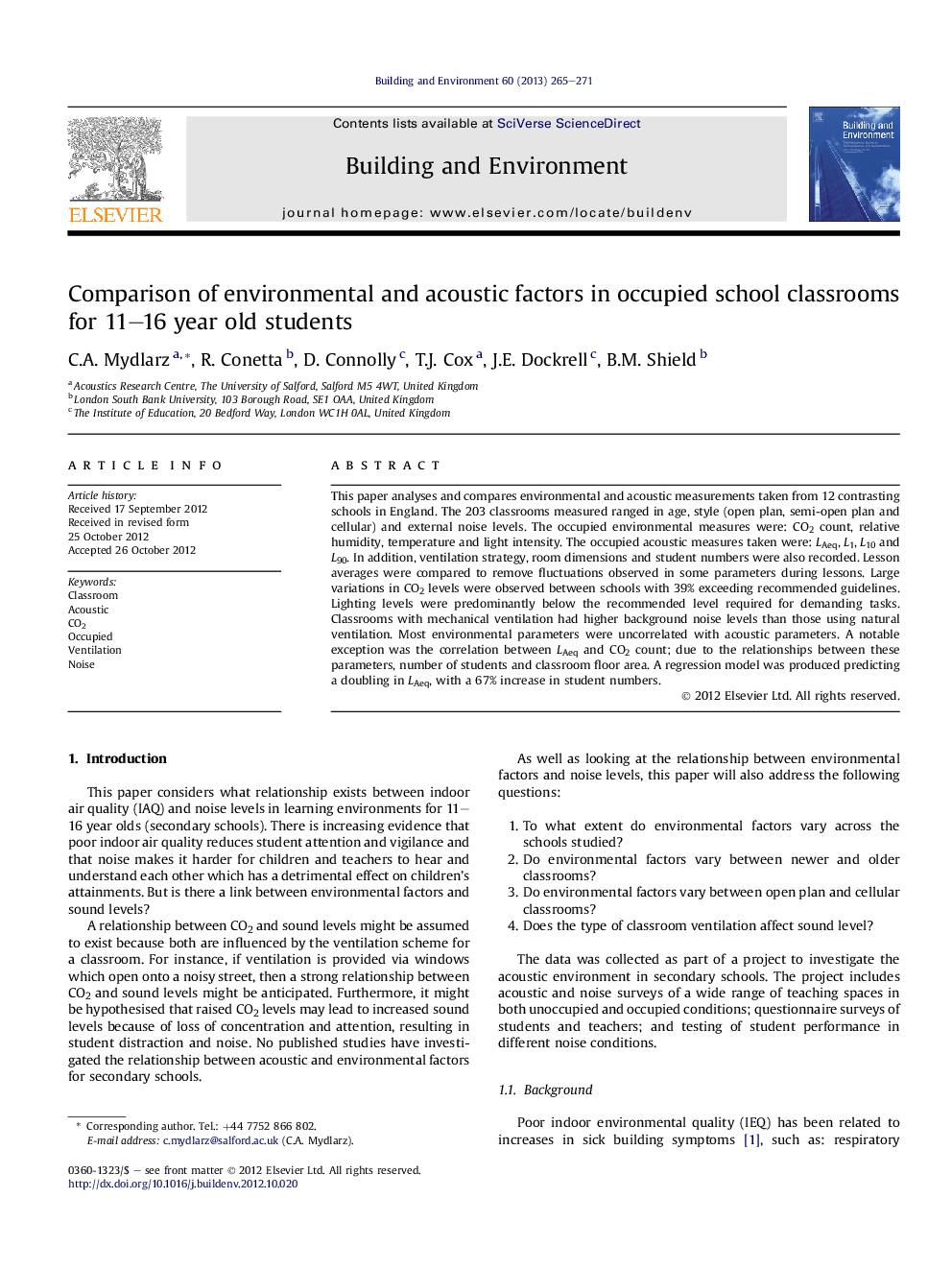| Article ID | Journal | Published Year | Pages | File Type |
|---|---|---|---|---|
| 248412 | Building and Environment | 2013 | 7 Pages |
This paper analyses and compares environmental and acoustic measurements taken from 12 contrasting schools in England. The 203 classrooms measured ranged in age, style (open plan, semi-open plan and cellular) and external noise levels. The occupied environmental measures were: CO2 count, relative humidity, temperature and light intensity. The occupied acoustic measures taken were: LAeq, L1, L10 and L90. In addition, ventilation strategy, room dimensions and student numbers were also recorded. Lesson averages were compared to remove fluctuations observed in some parameters during lessons. Large variations in CO2 levels were observed between schools with 39% exceeding recommended guidelines. Lighting levels were predominantly below the recommended level required for demanding tasks. Classrooms with mechanical ventilation had higher background noise levels than those using natural ventilation. Most environmental parameters were uncorrelated with acoustic parameters. A notable exception was the correlation between LAeq and CO2 count; due to the relationships between these parameters, number of students and classroom floor area. A regression model was produced predicting a doubling in LAeq, with a 67% increase in student numbers.
► Comparison and analysis of environmental and acoustic measurements from 12 schools in England. ► Large variations in CO2 levels were observed between schools with some exceeding recommended guidelines. ► Lighting levels were predominantly below the recommended level required for demanding tasks. ► Classrooms with mechanical ventilation had higher background noise levels than those using natural ventilation. ► A regression model was produced predicting a doubling in LAeq, with a 167% increase in student numbers.
